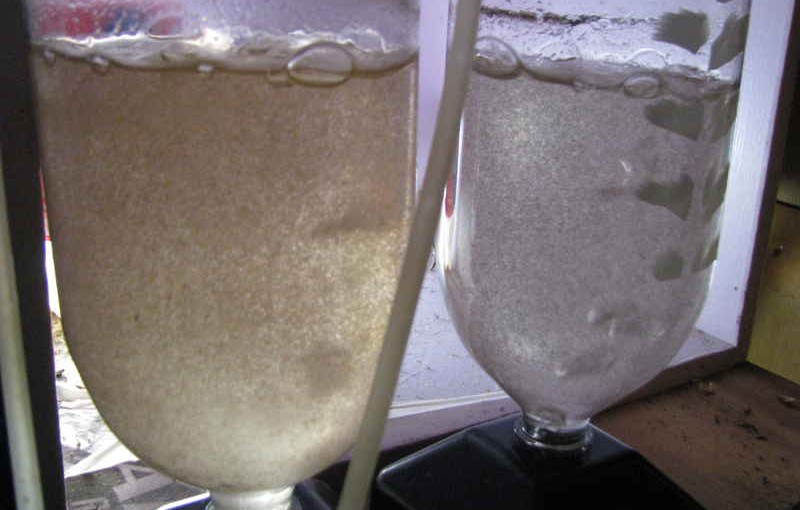I can’t remember when I didn’t hatch a batch of baby brine shrimp (bbs) on a daily basis. That said, after years of producing a daily batch, I started to notice that my hatch rates were falling and I was at a loss as to the reason why. Well after checking all the obvious causes without any improvements I though perhaps a refresher course was in order, BBS 101 if you will.
Well, long story short, I was adding too much salt. After years of mixing up a batch every day I had become rather lackadaisical in my measurements. I was using something close to a litre of water and a couple heaping table spoons of salt per batch. Once I got a grip and started measuring exactly 1 2/3 table spoons of salt to a litre of water all was well again.
It all has to do with the way that things work in nature. Normally the Great Salt Lake is all but saturated with sodium chloride and other salts. But each year, for a few short weeks following snow melt, vast quantities of freshwater come pouring out of the Wasatch Mountains into the Great Salt Lake. Since freshwater is lighter than brine, the snow melt forms a temporary freshwater “lens” floating on the surface waters. When salt concentration drops below about twice the brininess of seawater, to less than 70ppt, the cysts hatch.
Even with the rising costs of high quality eggs, bbs is still a real bargain for the amount of food you get for the money and time spent. A pound of Grade ‘A’ eggs is going for around $47.00 and I get my salt at Wal-Mart for .50 cents. At those costs, I can produce 255,000 nauplii (baby brine shrimp) per gram of cysts for around $0.12 cents a batch. A great value in my book.
